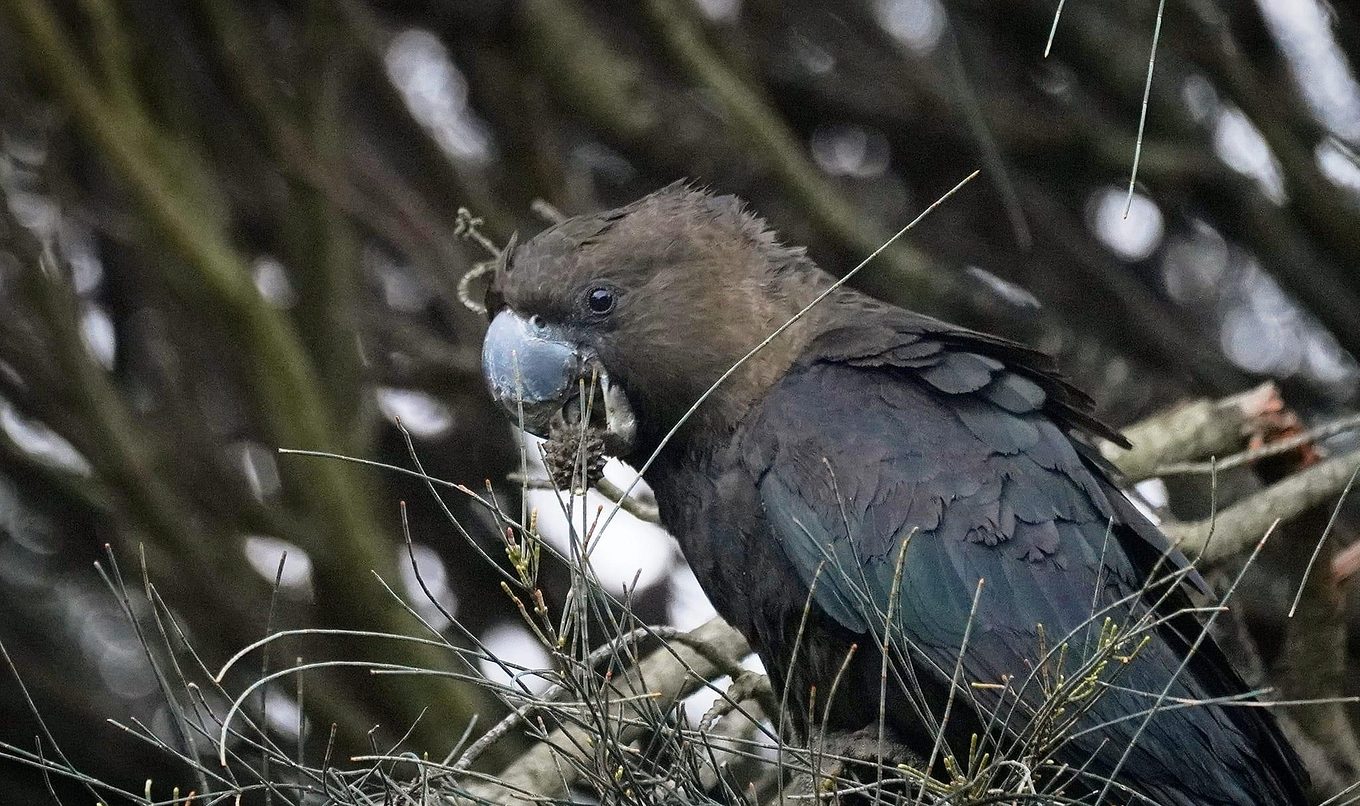Endangered glossy black cockatoo spotted in Deep Creek National Park
One of Australia’s rarest cockatoos has been spotted in Deep Creek National Park on the Fleurieu Peninsula for the first time since the 1970s.

A single male South Australian glossy black-cockatoo was spotted in the park in late July, and another sighting confirmed in the same location more recently.
For the past 50 years the endangered glossy black-cockatoo has only been found in South Australia on Kangaroo Island.
There were severe concerns for the species after the 2019-20 Kangaroo Island bushfires, with more than 50 per cent of their feeding habitat and nearly 40 per cent of nesting sites located within the 210,000 hectares burned in the bushfires.
Prior to the 1970s, the glossy black cockatoo occurred on mainland Fleurieu Peninsula but due to widespread loss of drooping she-oak trees, the population contracted to Kangaroo Island where just 160 birds remained in the early 1990s.
Since then, a concerted recovery program run by the Kangaroo Island Landscape Board has resulted in steady increase to about 400 birds at present.
The state government has committed to establishing a new $3 million Biodiversity Unit that will focus on coordinating activity like this aimed at protecting and restoring biodiversity.
The investment will significantly boost conservation efforts enhancing the work of National Parks and Wildlife Service, Landscape Boards, non- government organisations and volunteers in restoring our unique biodiversity.
It will also further strengthen the implementation of the National Threatened Species Strategy (2021-2031) and the National Biodiversity Strategy.
NPWS Conservation Ecologist, Anthony Abley said he was really excited by the sighting.
"While we’ve had a number of reports of glossy black cockatoos being spotted in the Fleurieu region over the years, none of these have been able to be confirmed previously," he said.
"Both of these sightings demonstrate the importance of having an interested and engaged community whose eyes and ears on the ground can contribute so much to our understanding of the distributions of our plant and animal species.
"Glossy black cockatoos feed almost exclusively on the seeds of drooping she-oak trees, and these can be found in pockets in Deep Creek National Park and throughout the Fleurieu region."
To report a sighting email Anthony.Abley@sa.gov.au or for further information on the glossy black-cockatoo visit the KI Landscape Board here.

